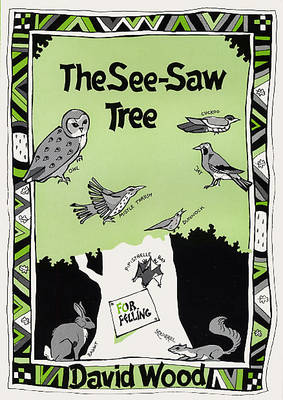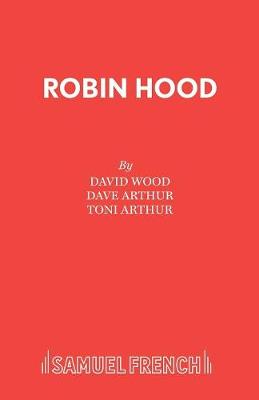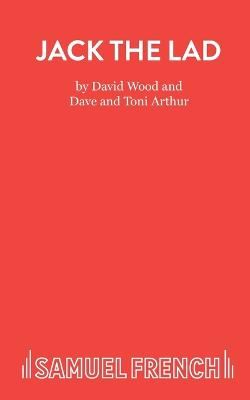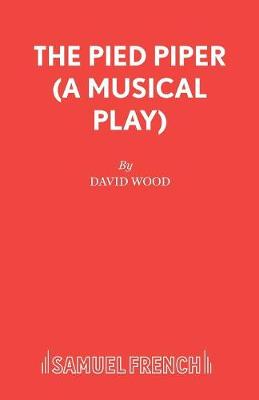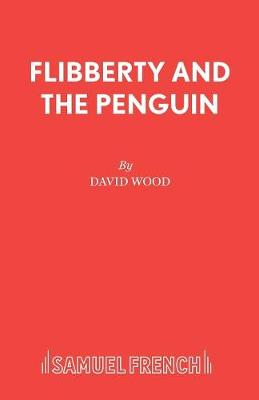Acting Edition S.
7 total works
The See-Saw Tree, an ancient oak, stands on ground which is ear-marked for development into a children's playground by Mr. Jay, owner of the nearby supermarket. A public meeting is called in the village hall to discuss his proposals, which include cutting down the three-hundred-year-old oak tree. The audience...Read more
The See-Saw Tree, an ancient oak, stands on ground which is ear-marked for development into a children's playground by Mr. Jay, owner of the nearby supermarket. A public meeting is called in the village hall to discuss his proposals, which include cutting down the three-hundred-year-old oak tree. The audience votes in favour, but Mr. Bunn, an environmental activist protests and shows us the devastating effect such plans will have on the inhabitants of the tree - the main part of the play tells the story of these creatures (who can be played by their human equivalents), their panic, their resilience and their evacuation from the tree.-4 women, 4 men
This is a series of playlets which tell the various well-known tales of Robin Hood. The possibilities for presenting the play are numerous open stage, promenade, open air as well as on a proscenium stage. There is a basic cast of fourteen, but the authors envisage productions in which...Read more
This is a series of playlets which tell the various well-known tales of Robin Hood. The possibilities for presenting the play are numerous open stage, promenade, open air as well as on a proscenium stage. There is a basic cast of fourteen, but the authors envisage productions in which large numbers of local people take part, emphasizing the basic concept of the play which is that of a musical celebration by a whole community.14 women or men
Hijack Over Hygenia is set in an aeroplane interior, on a roof, in a throne room and in a bedroom. Hygenia is the cleanest kingdom in the world. Disease is unknown. But one day a villainous Measle enters illegally and starts bringing the inhabitants out in spots. It is...Read more
Hijack Over Hygenia is set in an aeroplane interior, on a roof, in a throne room and in a bedroom. Hygenia is the cleanest kingdom in the world. Disease is unknown. But one day a villainous Measle enters illegally and starts bringing the inhabitants out in spots. It is all the plot of Dr. Spicknspan who, owing to the pervading healthiness, is always out of work. Things look serious, but the plot is foiled by the gallantry of the royal staff: peace, health and cleanliness are restored.4 women, 8 men
The Pied Piper is based on the traditional tale made famous by Robert Browning, and uses much of Browning's poem. This adaptation has the Piper making his first appearance as a modern busker, delighting the children with his music.3 women, 5 men, 20 men or women
The insects live in a busy world in the garden. Their existence, however, is always overshadowed by the humans - the Big Ones. Infuriated by constant "spraying" the unattractive Slug, Greenfly and Maggot call for rebellion, strikes, ruination of the garden. The others, the 'pretty' insects - Red Admiral,...Read more
The insects live in a busy world in the garden. Their existence, however, is always overshadowed by the humans - the Big Ones. Infuriated by constant "spraying" the unattractive Slug, Greenfly and Maggot call for rebellion, strikes, ruination of the garden. The others, the 'pretty' insects - Red Admiral, Ladybird and Bumble Bee - oppose this and war is declared. Glow Worm and Ant reluctantly become involved. Fortune swings one way and the other in a series of bitter campaigns. The garden goes to ruin and the Big Ones decide to build a garage on it. This brings the insects to their senses. They combine to restore the garden to its original beauty and thus preserve their home.
Young Penguin has come from Iceland to find his Mother and Father. This must be done before the spring weather becomes too warm. He falls in with Flibberty, a genial goblin, who helps him in his search. They incur the wrath of Krafty Kingfisher, who accuses the Penguin of...Read more
Young Penguin has come from Iceland to find his Mother and Father. This must be done before the spring weather becomes too warm. He falls in with Flibberty, a genial goblin, who helps him in his search. They incur the wrath of Krafty Kingfisher, who accuses the Penguin of stealing a fish from him. On their journey the two meet, among others, two Silly Cuckoos busy practising their spring song, a helpful Bus Driver/Conductor, and the famous Mr. Maestro who has come to town to conduct a concert (he can only understand singing, not talking).4 women, 11 men
